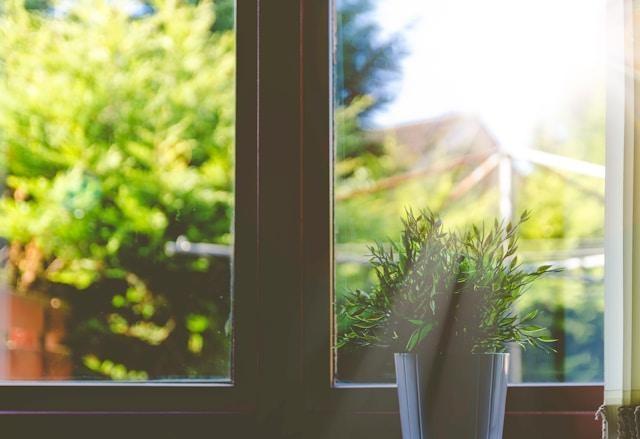The Latest Trends in Modern Window Design

Once mere openings for light and ventilation, windows have evolved into essential architectural elements that blend functionality with aesthetic innovation. In modern design, windows are at the forefront of architectural expression.
This article explores the latest trends shaping the world of contemporary window design, where innovation meets style to redefine how we experience natural light, energy efficiency, and the overall ambiance of our living spaces.
15 Trends in Modern Window Design
1. Minimalist Frames:
In pursuing clean lines and unobstructed views, minimalist window frames have become a hallmark of modern design. Thin profiles and sleek edges contribute to a contemporary aesthetic and maximize the amount of natural light that enters a space.
Image via: Unsplash2. Energy-Efficient Solutions:
Sustainability is a driving force in modern design, and windows are crucial in energy efficiency. The latest trends focus on high-performance glazing, multi-pane configurations, and advanced framing materials to enhance insulation and reduce energy consumption, contributing to both environmental and economic sustainability.
3. Smart Windows:
Integrating technology into window design has given rise to smart windows. These windows can dynamically adjust tint levels, providing privacy or maximizing natural light as needed. Smart window systems can be controlled through mobile apps or automated sensors, offering a seamless blend of convenience and energy efficiency.
4. Floor-to-Ceiling Statements:
The trend towards expansive, floor-to-ceiling windows continues to gain popularity. This design choice floods interiors with natural light and blurs the boundaries between indoor and outdoor spaces, creating a harmonious connection with the surrounding environment.
5. Black Frames and Accents:
In a departure from traditional white frames, black window frames and accents make a bold statement in modern design. The stark contrast serves as a captivating design element and a dynamic frame for outdoor views, transforming them into captivating artworks. Whether adorning residential spaces or adding a touch of sophistication to commercial environments, the infusion of black window frames introduces a striking and elegant dimension, elevating the overall ambiance with a modern edge that captivates the eye and transforms the living or working space.
6. Dynamic Shapes and Configurations:
Modern architecture embraces creativity, and this extends to window design. Irregular shapes, asymmetrical configurations, and custom geometries are gaining traction. Architects and designers experiment with unconventional window shapes to create unique focal points within a building's structure.
7. Sustainable Materials:
The emphasis on sustainability extends to the materials used in modern window design. Recycled and locally sourced materials and those with a low environmental impact are becoming more prevalent. Designers are incorporating materials like bamboo, reclaimed wood, and recycled aluminum to align with eco-conscious principles.
8. Biophilic Design Integration:
Integrating biophilic design principles in window design is a growing trend, bringing the outdoors in. This involves incorporating elements like indoor gardens, natural materials, and large windows that provide unobstructed views of nature, promoting a sense of well-being and connection to the environment.
9. Privacy Solutions:
Maintaining privacy without sacrificing natural light is a modern design challenge. Frosted glass, switchable privacy glass, and creative window placements are emerging as solutions, offering flexibility in balancing openness with the need for seclusion.
10. Artistic Window Treatments:
Beyond the window itself, artistic and innovative window treatments are gaining attention. Custom-designed blinds, curtains, and shades are becoming integral components of modern window design, adding an extra layer of style and personalization.
11. Frameless Windows:
Frameless windows offer an unparalleled sense of openness and transparency. This design trend eliminates visible frames, allowing unobstructed views and a seamless connection with the surrounding environment. Architects are increasingly incorporating frameless windows to create a contemporary and airy atmosphere.
12. Multi-Functional Windows:
Modern window design is embracing versatility with multi-functional windows that serve dual purposes. Examples include windows that transform into balconies, foldable windows that double as awnings, or rotating windows that provide optimal control over ventilation and sunlight exposure.
13. Colored Glass Accents:
Adding a vibrant touch to modern interiors, colored glass accents in windows are gaining popularity. Tinted or stained glass panels introduce colors, enhancing the overall design aesthetic. This trend allows for artistic expression while maintaining the functional aspects of windows.
14. Customizable Modular Windows:
Modular window systems, allowing for customizable configurations, are on the rise. Homeowners and designers can arrange modular windows in various patterns and sizes, offering flexibility in design expression. Modular architecture trends cater to individual preferences and adapts to diverse architectural styles.
15. Interior Courtyard Windows:
Creating private havens within homes, interior courtyard windows are becoming a focal point in modern architecture. These windows frame views of private courtyards or green spaces within the building, infusing interiors with a sense of tranquility and providing an escape from urban surroundings.
Pushing the Boundaries of What’s Possible
The latest trends in modern window design reflect a dynamic blend of aesthetics, sustainability, and technological innovation. As architects and designers continue to push the boundaries of what's possible, windows are evolving into functional works of art, transforming spaces and redefining our connection to the external world. Whether through minimalist frames, smart technologies, or sustainable materials, modern window design is at the forefront of shaping the architecture of the future.

